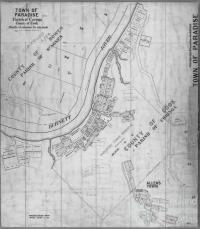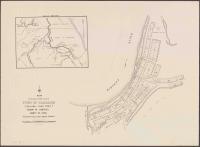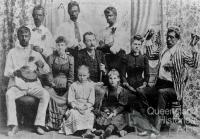- Home
- Quintessential Queensland
- Distinctiveness
- Perceptions
- Perceptions: how people understand the landscape
- From runs to closer settlement
- Geological survey of Queensland
- Mapping a new colony, 1860-80
- Mapping the Torres Strait: from TI to Magani Malu and Zenadh Kes
- Order in Paradise: a colonial gold field
- Queensland atlas, 1865
- Queensland mapping since 1900
- Queensland: the slogan state
- Rainforests of North Queensland
- Walkabout
- Queenslanders
- Queenslanders: people in the landscape
- Aboriginal heroes: episodes in the colonial landscape
- Australian South Sea Islanders
- Cane fields and solidarity in the multiethnic north
- Chinatowns
- Colonial immigration to Queensland
- Greek Cafés in the landscape of Queensland
- Hispanics and human rights in Queensland’s public spaces
- Italians in north Queensland
- Lebanese in rural Queensland
- Queensland clothing
- Queensland for ‘the best kind of population, primary producers’
- Too remote, too primitive and too expensive: Scandinavian settlers in colonial Queensland
- Distance
- Movement
- Movement: how people move through the landscape
- Air travel in Queensland
- Bicycling through Brisbane, 1896
- Cobb & Co
- Journey to Hayman Island, 1938
- Law and story-strings
- Mobile kids: children’s explorations of Cherbourg
- Movable heritage of North Queensland
- Passages to India: military linkages with Queensland
- The Queen in Queensland, 1954
- Transient Chinese in colonial Queensland
- Travelling times by rail
- Pathways
- Pathways: how things move through the landscape and where they are made
- Aboriginal dreaming paths and trading ways
- Chinese traders in the nineteenth century
- Introducing the cane toad
- Pituri bag
- Press and the media
- Radio in Queensland
- Red Cross Society and World War I in Queensland
- The telephone in Queensland
- Where did the trams go?
- ‘A little bit of love for me and a murder for my old man’: the Queensland Bush Book Club
- Movement
- Division
- Separation
- Separation: divisions in the landscape
- Asylums in the landscape
- Brisbane River
- Changing landscape of radicalism
- Civil government boundaries
- Convict Brisbane
- Dividing Queensland - Pauline Hanson’s One Nation Party
- High water mark: the shifting electoral landscape 2001-12
- Hospitals in the landscape
- Indigenous health
- Palm Island
- Secession movements
- Separate spheres: gender and dress codes
- Separating land, separating culture
- Stone walls do a prison make: law on the landscape
- The 1967 Referendum – the State comes together?
- Utopian communities
- Whiteness in the tropics
- Conflict
- Conflict: how people contest the landscape
- A tale of two elections – One Nation and political protest
- Battle of Brisbane – Australian masculinity under threat
- Dangerous spaces - youth politics in Brisbane, 1960s-70s
- Fortress Queensland 1942-45
- Grassy hills: colonial defence and coastal forts
- Great Shearers’ Strike of 1891
- Iwasaki project
- Johannes Bjelke-Petersen: straddling a barbed wire fence
- Mount Etna: Queensland's longest environmental conflict
- Native Police
- Skyrail Cairns (Research notes)
- Staunch but conservative – the trade union movement in Rockhampton
- The Chinese question
- Thomas Wentworth Wills and Cullin-la-ringo Station
- Separation
- Dreaming
- Imagination
- Imagination: how people have imagined Queensland
- Brisbane River and Moreton Bay: Thomas Welsby
- Changing views of the Glasshouse Mountains
- Imagining Queensland in film and television production
- Jacaranda
- Literary mapping of Brisbane in the 1990s
- Looking at Mount Coot-tha
- Mapping the Macqueen farm
- Mapping the mythic: Hugh Sawrey's ‘outback’
- People’s Republic of Woodford
- Poinsettia city: Brisbane’s flower
- The Pineapple Girl
- The writers of Tamborine Mountain
- Vance and Nettie Palmer
- Memory
- Memory: how people remember the landscape
- Anna Wickham: the memory of a moment
- Berajondo and Mill Point: remembering place and landscape
- Cemeteries in the landscape
- Landscapes of memory: Tjapukai Dance Theatre and Laura Festival
- Monuments and memory: T.J. Byrnes and T.J. Ryan
- Out where the dead towns lie
- Queensland in miniature: the Brisbane Exhibition
- Roadside ++++ memorials
- Shipwrecks as graves
- The Dame in the tropics: Nellie Melba
- Tinnenburra
- Vanished heritage
- War memorials
- Curiosity
- Curiosity: knowledge through the landscape
- A playground for science: Great Barrier Reef
- Duboisia hopwoodii: a colonial curiosity
- Great Artesian Basin: water from deeper down
- In search of Landsborough
- James Cook’s hundred days in Queensland
- Mutual curiosity – Aboriginal people and explorers
- Queensland Acclimatisation Society
- Queensland’s own sea monster: a curious tale of loss and regret
- St Lucia: degrees of landscape
- Townsville’s Mount St John Zoo
- Imagination
- Development
- Exploitation
- Transformation
- Transformation: how the landscape has changed and been modified
- Cultivation
- Empire and agribusiness: the Australian Mercantile Land and Finance Company
- Gold
- Kill, cure, or strangle: Atherton Tablelands
- National parks in Queensland
- Pastoralism 1860s–1915
- Prickly pear
- Repurchasing estates: the transformation of Durundur
- Soil
- Sugar
- Sunshine Coast
- The Brigalow
- Walter Reid Cultural Centre, Rockhampton: back again
- Survival
- Survival: how the landscape impacts on people
- Brisbane floods: 1893 to the summer of sorrow
- City of the Damned: how the media embraced the Brisbane floods
- Depression era
- Did Clem Jones save Brisbane from flood?
- Droughts and floods and rail
- Missions and reserves
- Queensland British Food Corporation
- Rockhampton’s great flood of 1918
- Station homesteads
- Tropical cyclones
- Wreck of the Quetta
- Pleasure
- Pleasure: how people enjoy the landscape
- Bushwalking in Queensland
- Cherbourg that’s my home: celebrating landscape through song
- Creating rural attractions
- Festivals
- Queer pleasure: masculinity, male homosexuality and public space
- Railway refreshment rooms
- Regional cinema
- Schoolies week: a festival of misrule
- The sporting landscape
- Visiting the Great Barrier Reef
By:
Kate Quirk The gold mining town of Paradise once stretched for more than a kilometre along the southern bank of the Burnett River in Central Queensland. Founded in 1889 and abandoned by 1898, Paradise was an entirely new settlement. Like most gold towns, it had no pre-existing buildings, roads or infrastructure. Paradise presented to its inhabitants a perfect ‘blank slate’ which they might shape into whatever form they chose.
Traditionally, it was believed that the result of such freedom would be chaotic, ramshackle towns that reflected the chaotic, ramshackle lives of the miners who built them. Recent research has challenged this perception and re-evaluated the types of people that lived in gold towns, and the type of settlements they created.
Rather than the wild, masculine gold towns of popular perceptions, most were actually populated by families – by women and children as well as men. Further, it is plain that these families were not content to permit a disordered, ad hoc settlement to evolve. Rather, they saw in the ‘blank slate’ the opportunity to create what they believed to be an ideal town and Paradise was no exception.
Historical and archaeological evidence reveals that in Paradise, as in so many nineteenth century mining towns, this civic ideal seems to have been strongly shaped by the notion of gentility or ‘Victorianism’. A combination of evangelical morality, complex etiquette, and fervour for self-improvement, gentility valued order in all aspects of life. This order prescribed everything from the setting of the dinner table to the layout of towns.
Campaign for a town survey
The most obvious representation of order in the Paradise townscape is the regular, grid-like organisation of its streets and allotments laid out in the town survey of 1891. Such patterns were a common feature of nineteenth century towns, and so this is not in itself extraordinary. What is extraordinary, however, is the lengths to which the Paradise inhabitants went to have their town surveyed in the first place. Not content to allow the town to develop in a laissez fair or disorderly manner, Paradise citizens began actively campaigning to have the town surveyed in 1890, ‘so that we will not have people building upon a street, and then have to remove again’ as reported in the Wide Bay and Burnett News, 23 August 1890. Clearly, there was no thought that a town plan might be fitted around the settlement as it already existed – rather Paradise must be made, from the first, to fit to the ideals of an orderly township.
Similar sentiments are evident in concerns over the placement of the Paradise school. Even before the survey had been conducted land had been allotted for the school buildings, most likely on the main thoroughfare of Allen Street, where most other major buildings were located. On 30 October 1890, however, the Wide Bay and Burnett News reported that the school allotment had been moved to a more ‘suitable’ location on Riverview Terrace, which ran along the ridge behind the township.
This relocation reflected common Victorian notions about the ‘proper’ placement of schools. As places of education, schools needed to be kept separate from physically or morally polluting influences, and should ideally be placed in healthy, natural settings offering plenty of fresh air. The main street of Paradise, dotted with hotels, businesses and industrial complexes was clearly not a ‘proper’ place for children to be educated. On the other hand, the ridge behind the town, with its separation from these corruptions and its prevailing cool river breezes was eminently ‘suitable’.
Community spaces
The notion of what was ‘proper’ was also an important factor in the establishment of the Paradise School of Arts Hall. There were a number of large hotels in the town at which events could be held, but the townspeople were adamant that they should also have a community hall. The reason, as noted by the Paradise correspondent to The Maryborough Chronicle on 1 January 1892, was simple: ‘there is no other place here only hotels, which are not fit and proper places to hold meetings and entertainments.’
Expressed here is the Victorian sentiment that hotels were places of corruption, and that they were not appropriate for certain members of society, particularly women and children. It is for this reason that local women would not attend events held at Paradise hotels, and for this reason that the town needed a space that all community members could use. Consequently The Maryborough Chronicle of 1 January 1892 reported that a committee had been assembled and fundraising begun for a School of Arts Hall. On March 17, scarcely two months later, the building was completed and opened with a ball that any lady could safely attend.
The popular view of gold towns has long been of wild and raucous places. Populated by legions of lone men, they were supposed to be rough, disordered and anarchic settlements. As Paradise demonstrates, however, the reality was quite different. Here is evidence of men, women and children seeking to shape their town according to common Victorian values of order and propriety. The result was not the ramshackle towns of popular conceptions, but rather a very orderly, family-centred community.
References and Further reading (Note):
Kate Quirk, ‘The colonial goldfields: visions and revisions’, Australasian historical archaeology, 26, 2008
Copyright © Kate Quirk, 2010
Related:
Perceptions 








